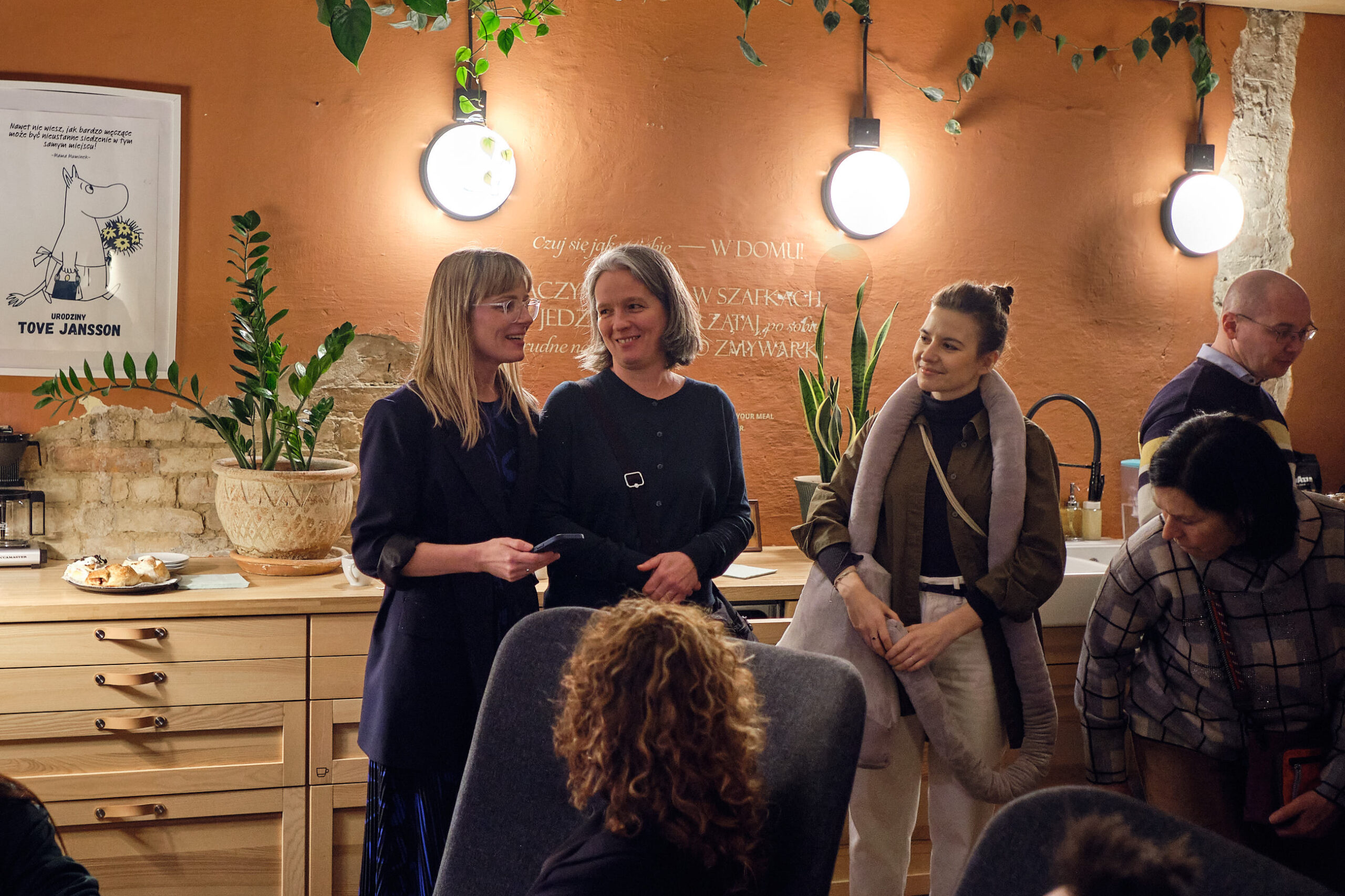Magdalena Małachowska and Teresa Otulak from the Design Department at the Academy of Art in Szczecin explored this issue as curators and designers as part of a year-long process related to the Electrical and Electronic Equipment (EEE) sector, ultimately dividing the results of their research into an exhibition divided into two parts:
• Research Exhibition – research-oriented, understandable for business,
• Unplugged – an anti-exhibition, celebrating community and familiarizing audiences with sustainable design topics.
White cube. 9 a.m. – SUM.
The Research Exhibition took place at the ZONA Contemporary Art Gallery in Szczecin. During the event, the curators presented the results of field research conducted by them. This approach allowed for the creation of a space to present the results of a year-long research project, which often disappears without form and presentation space.
Presenting the story of the electrical and electronic sector in a white cube setting allowed participants to be isolated from everyday life, offices, and view their specialization from an entirely new perspective. The exhibition started at 9 a.m.—the hour when work begins. This approach helped maintain participants’ attention and focus on the question posed by the curators—where does the electrical and electronic sector fit into the world of design?
Meeting participants included an international consortium from the CIRCOTRONIC project—business representatives, business-related institutions, innovation research centers, as well as regional government officials from eight Central European countries.
A highlight of the presentation was the appearance of the exhibition’s totem—a scaled-up plush plug, introducing the process of familiarizing attendees with electricity. Energy, which is often associated with danger in daily life but is a tool without which the Western world would experience paralysis. It’s easy to avoid topics that are invisible. After all, electricity is nothing more than a product of human activity—something that can give life, like a defibrillator, or take it away, like an electric chair.
The research results presented were conclusions drawn from the curators’ travels to events such as Gdynia Design Days, the Venice Biennale of Architecture, Holitopia Symbiotic Politics in Berlin, Design Week in Vienna, and Dutch Design Week in Eindhoven, collectively visited by 1.25 million people annually.
The three key conclusions drawn from the research were:
1. The EEE sector is invisible to the consumer; at most, it is seen as a tool to achieve a goal—we take for granted that we have unlimited access to electricity.
2. As societies, we are mourning the “old world.” We are trying to accelerate changes by adhering to a growth trajectory, but what we really need is a pause and reflection—a time to find solutions in post-growth, circular economics where sustainable design becomes the norm, not the exception.
3. We are deploying more and more devices and content using modern technology, increasing feelings of loneliness and disorientation.
After church, we return home. 5:00 p.m. – dessert.
Unplugged invited attendees into the space of the Scandinavian House, where exhibition objects were seamlessly integrated into the existing environment. The house became the exhibition’s stage, with participants assuming the role of guests and curators as hosts.
This anti-exhibition celebrated community, using the electrical and electronic sector as a pretext for relaxation and reflection. To acquire new knowledge, we must first make space for it. Therefore, alongside scenarios of the future, play and shared meals were emphasized.
The event aimed to move away from ocular-centric exhibition practices and engage other senses. The “Life in Live” game, designed specifically for the occasion by the curators, served to anchor participants in the present moment through touch, laughter, movement, and interaction.
Multisensory experiences allowed for the creation of a new context for the EEE sector, familiarizing attendees with its truths within the warm and safe space of a home. The game proved to be a provocation, prompting new questions about the role of circular design.
Indulgence.
The research results revealed that the relationship between design and the EEE sector does not exist. The role of the designer and curator is to ask and seek answers to the question, “Why?”
For example:
– Why is the EEE sector invisible in the world of design?
– Why is electricity treated as an infinite resource?
– Why is no one regulating waste production and product aging cycles?
Therefore, the project required broader commentary and the division of the exhibition into two parts.
The role of design is changing so dynamically that experimenting with exhibition formats as a tool for knowledge dissemination and illuminating interdisciplinary phenomena is essential for discipline development.
Exhibitions, as a form of communication with the audience, require expanding the field of vision to engage other senses so that insights can be absorbed, not just observed.
For polish version please look on FORMY.XYZ
